Mastering colour is a fundamental component of personal branding. For the successful man, understanding which colours to combine is a strategic tool, projecting authority, sophistication, and an unwavering attention to detail.
The simplest way to match colours however is to know which two colours go well together.
Certain colour pairings have achieved timeless status for their unerring effectiveness. Integrate these into your core rotation immediately.
Navy Blue & White

This is arguably the most essential combination in menswear. It is clean, crisp, and projects an air of effortless command.
A sharp navy suit with a brilliant white shirt is the foundation of power dressing. For a more relaxed setting, a navy polo with white trousers is equally authoritative.
Grey & Black
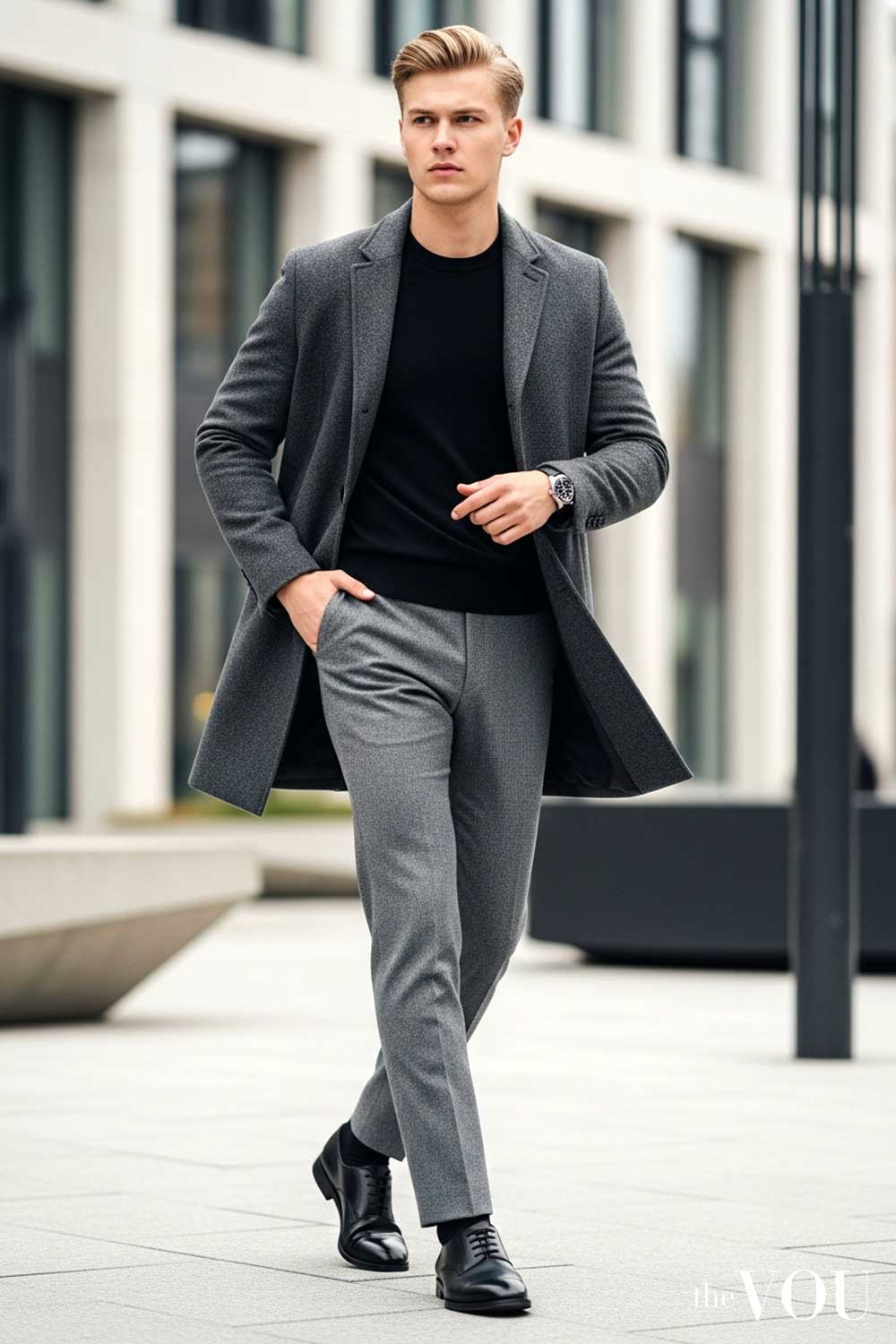
The combination of grey and black is modern, minimalist, and severe. It communicates a focus on form and structure over superfluous detail.
Pair charcoal grey trousers with a black merino wool jumper for a look that is both powerful and understated. This palette is the signature of the urban professional.
Beige & Khaki
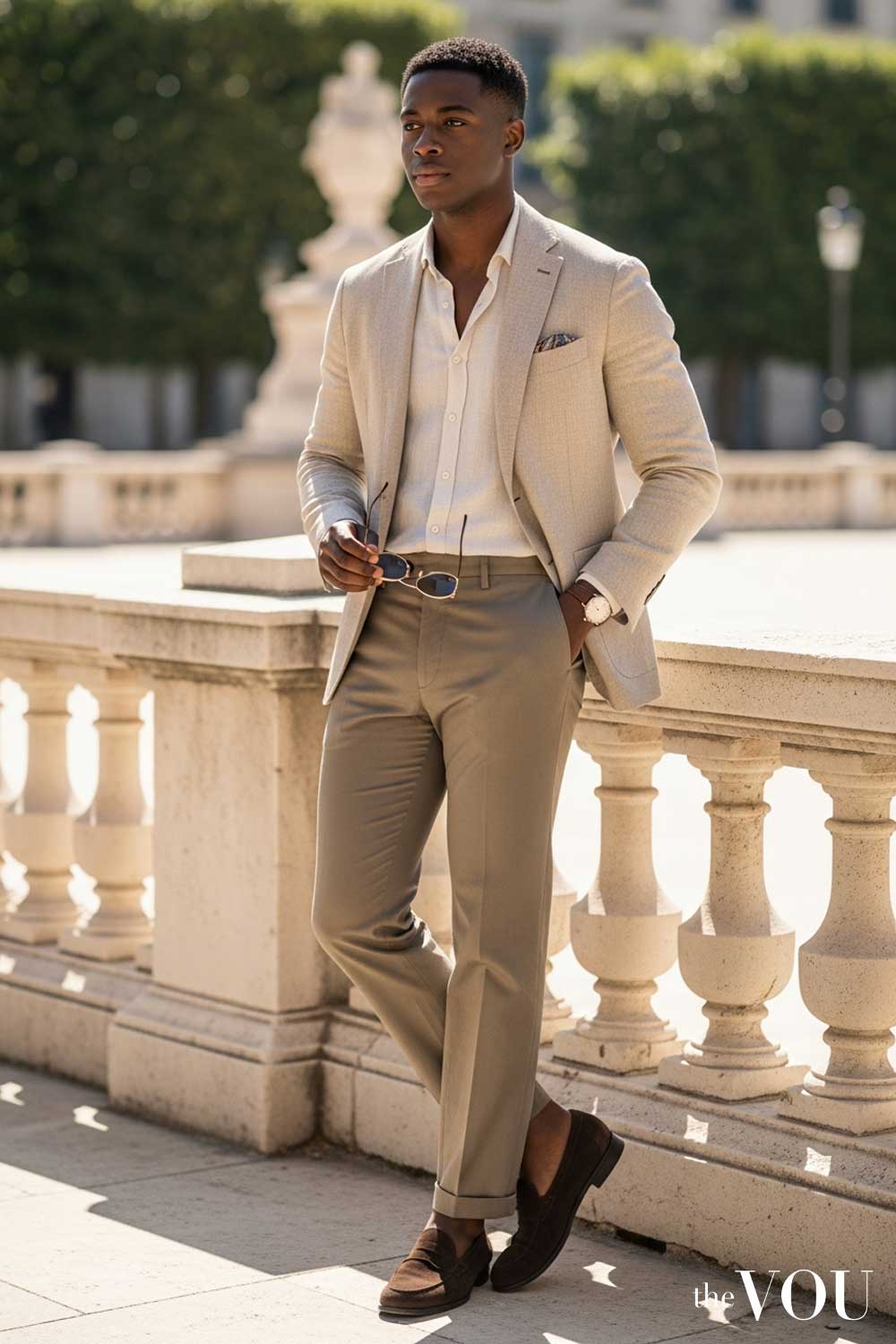
Pairing different shades of neutral tones like beige and khaki creates an understated and sophisticated look. It is a hallmark of intelligent, warm-weather dressing.
Combine a beige linen jacket with khaki chinos for a refined, smart-casual ensemble that speaks of relaxed confidence and worldly experience.
Brown & Cream
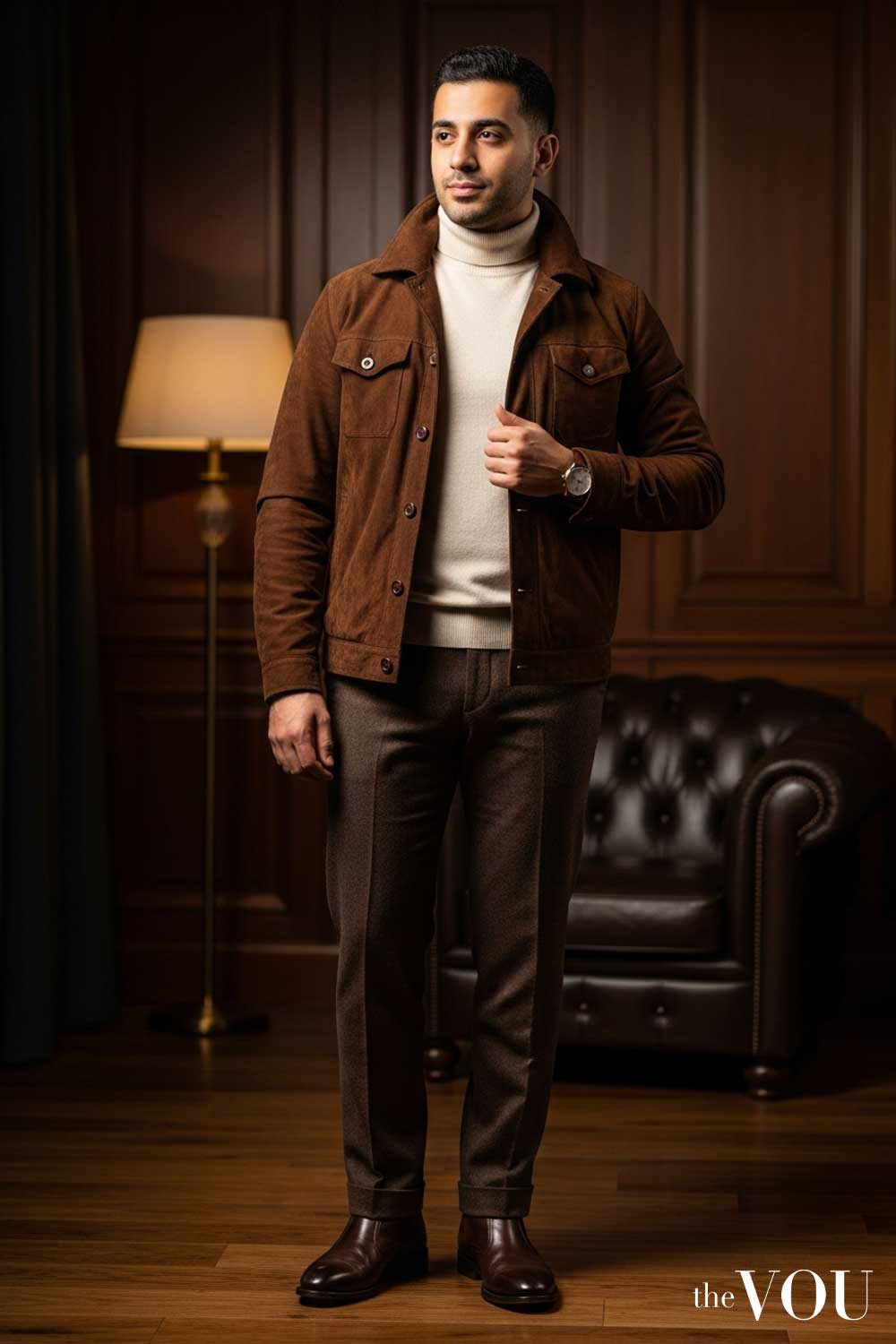
This pairing exudes warmth, luxury, and a connection to heritage. The contrast between the deep, earthy brown and the soft, elegant cream is both comforting and commanding.
Imagine a rich brown leather jacket worn over a thick cream cashmere knit. It is a combination that relies on texture as much as colour to project its superior quality.
Understanding Colour Theory
Before assembling a superior wardrobe, you must first grasp the principles that govern it. Colour theory, centred around the colour wheel, is the non-negotiable science behind visual harmony and contrast.
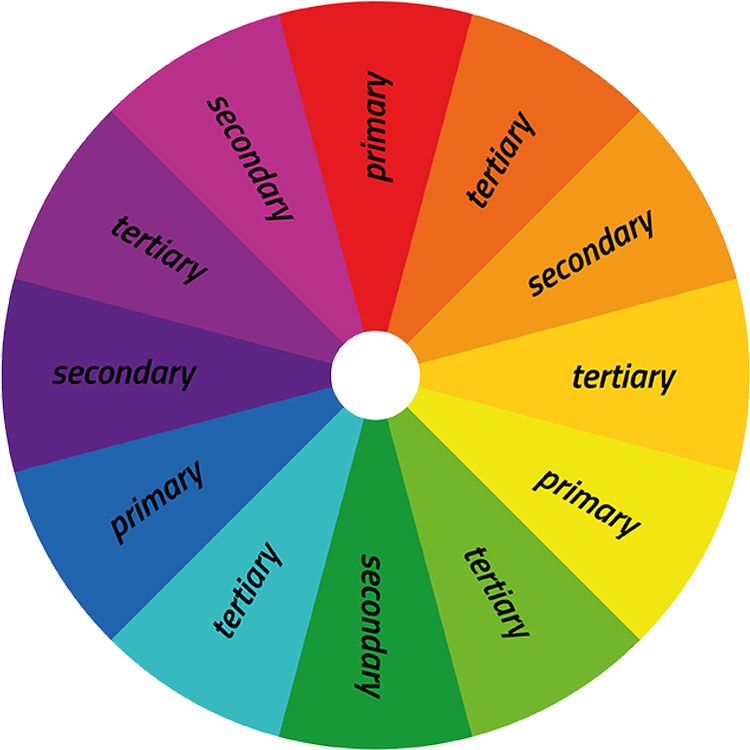
The colour wheel organises colours logically, revealing their relationships. It is comprised of three core categories; primary, secondary, and tertiary colours. Understanding this structure is the first step towards total sartorial control.
Primary Colours: The Building Blocks
Primary colours are the absolute foundation. They are Red, Yellow, and Blue.
These three hues cannot be created by mixing other colours. All other colours in existence are derived from them, making them the elemental source of your palette.
Secondary Colours: The First Mix
Secondary colours are forged by mixing two primary colours. This process yields Green (blue and yellow), Orange (red and yellow), and Purple (red and blue).
These colours offer a broader, yet still fundamental, range for building powerful combinations.
Tertiary Colours: The Nuanced Palette
Tertiary colours represent a more sophisticated level of colour mixing. They are created by combining a primary colour with an adjacent secondary colour.
The results are nuanced shades such as blue-green or red-orange. Mastering these demonstrates a deeper, more refined understanding of your palette.
Other Classic Colour Combinations Every Man Must Master
With a firm grasp of the theory, you can now execute with precision. Specific combinations produce distinct effects, and your task is to deploy the correct one for the desired outcome. These are the core strategies.
Complementary Colours
Complementary colours sit directly opposite each other on the colour wheel. This opposition creates the highest possible contrast, resulting in a bold and confident statement.

Key pairings include Blue and Orange, Red and Green, or Yellow and Purple. Deploy them when your objective is to be noticed. Use one colour as the base and the other as a sharp accent, such as an orange pocket square on a navy blazer.
Analogous Colours
Analogous colours are neighbours on the colour wheel. This proximity creates a low-contrast, harmonious effect that is exceptionally pleasing to the eye.

Think of blue paired with a blue-green, or a range of autumnal oranges and reds. This strategy projects a quiet, assured sophistication and is ideal for creating cohesive, elegant looks.
Triadic Colours
A triadic scheme uses three colours that are evenly spaced on the colour wheel, forming a triangle. This approach offers a dynamic balance of contrast and harmony.

Whilst a classic example is Red, Yellow, and Blue, a more refined application might involve their subtler variants. The key is to let one colour dominate, using the other two as supporting accents for a vibrant yet controlled aesthetic.
Advanced Colour Strategies
Once you have mastered the foundational pairings, you can ascend to more advanced strategies. These techniques demonstrate a superior level of control and sartorial intelligence.
The Monochromatic Approach
A monochromatic outfit uses various shades, tints, and tones of a single colour. This is not a safe or boring choice; it is a deliberate and highly sophisticated statement.

Assembling an entire look from different shades of grey, from charcoal to dove, creates a powerful, textured, and visually cohesive appearance. It signals discipline and an impeccable eye for nuance.
Incorporating Neutrals as a Canvas
Neutrals are not merely ‘safe’ colours; they are the essential canvas upon which you build your look. Black, white, grey, navy, and beige provide the grounding that allows bolder colours to function effectively.
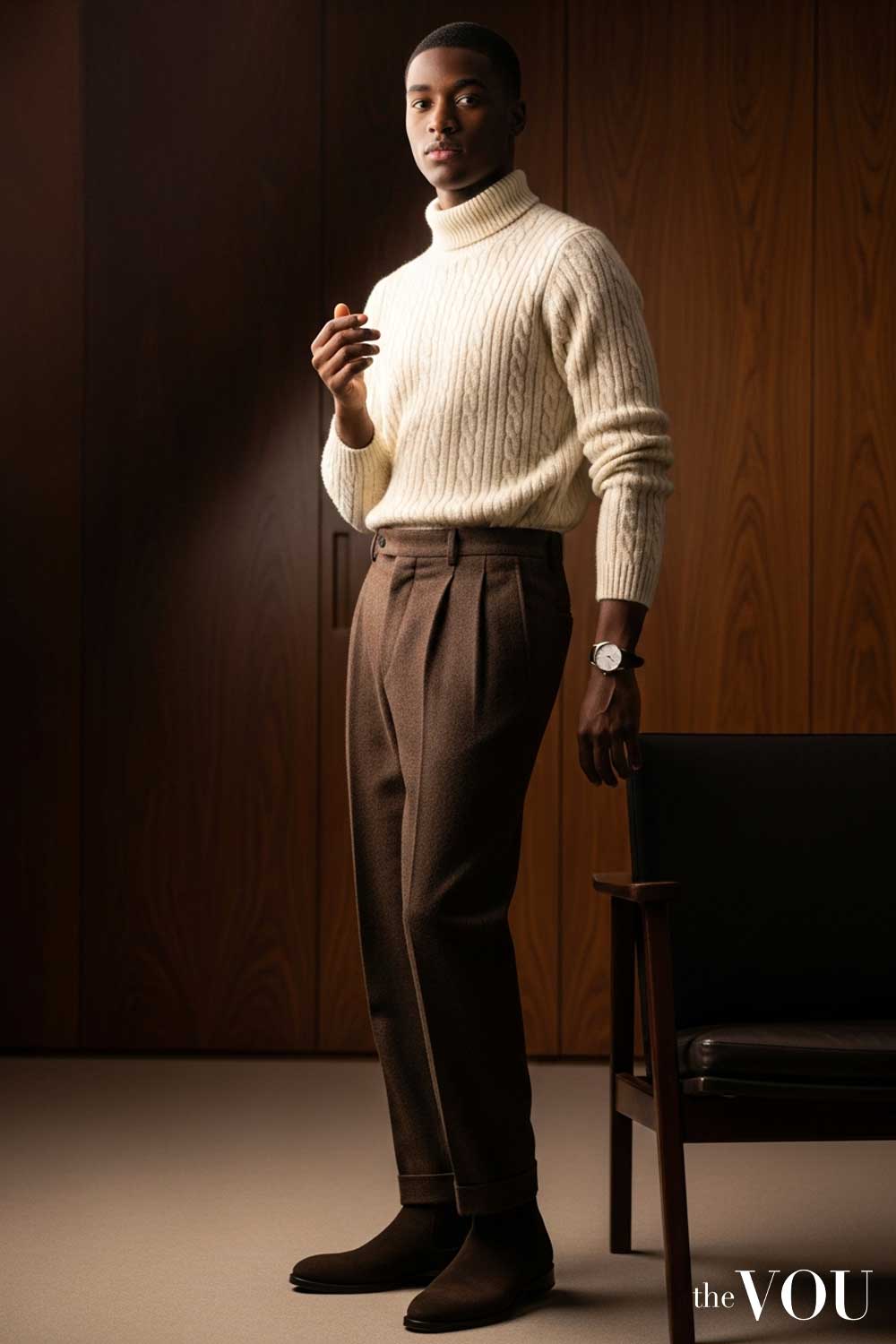
Use a neutral base like grey trousers and a white shirt to anchor a more vibrant piece, such as a burgundy blazer. The neutrals provide balance and prevent the statement colour from overwhelming.
The 60-30-10 Rule
Borrowed from interior design, the 60-30-10 rule provides a simple formula for a perfectly balanced outfit. It dictates a specific distribution of colour; 60% for your dominant colour, 30% for a secondary colour, and 10% for an accent.
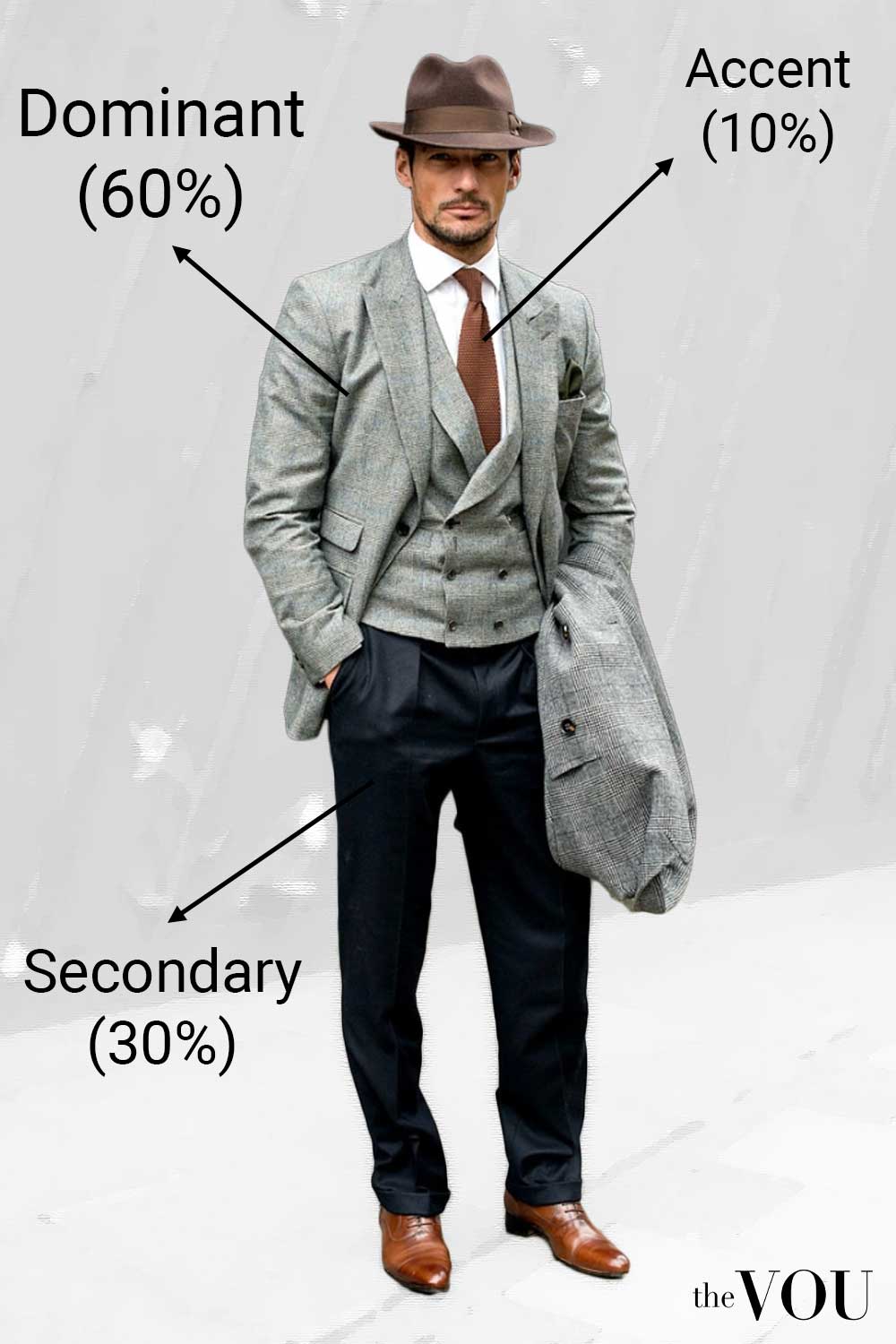
For example; a navy suit (60%) with a light blue shirt (30%) and a red pocket square (10%). This strategic allocation ensures harmony and prevents visual chaos.
Conclusion
Your choice of colour is never arbitrary. It is a declaration of your personal brand, a signal of your status, and a testament to your attention to detail.
By moving beyond guesswork and mastering the foundational principles of colour theory, you gain absolute control over your visual identity. Do not simply wear clothes. Instead, use colour as a strategic tool to build a wardrobe that is as intentional, powerful, and successful as you are.
A passionate advocate for inclusivity and diversity, Aidan is the driving force behind The VOU as its Editorial Manager. With a unique blend of editorial acumen and project management prowess, Aidan's insightful articles have graced the pages of The Verge, WWD, Forbes, and WTVOX, reflecting his deep interest in the dynamic intersection of styling with grooming for men and beyond.
After years of managing hundreds of fashion brands from London's office of a global retailer, Mandy has ventured into freelancing. Connected with several fashion retailers and media platforms in the US, Australia, and the UK, Mandy uses her expertise to consult for emerging fashion brands create top-notch content as an editorial strategist for several online publications.
Sara Law is a beauty and lifestyle contributor for several top fashion and beauty magazines such as Elle, Vogue, and Cosmopolitan. In parallel, Sara is leading Myer's global marketing team and consults for top Australian beauty brands such as Eye of Horus, Inika, Kester Black, Alpha-H, and many more.


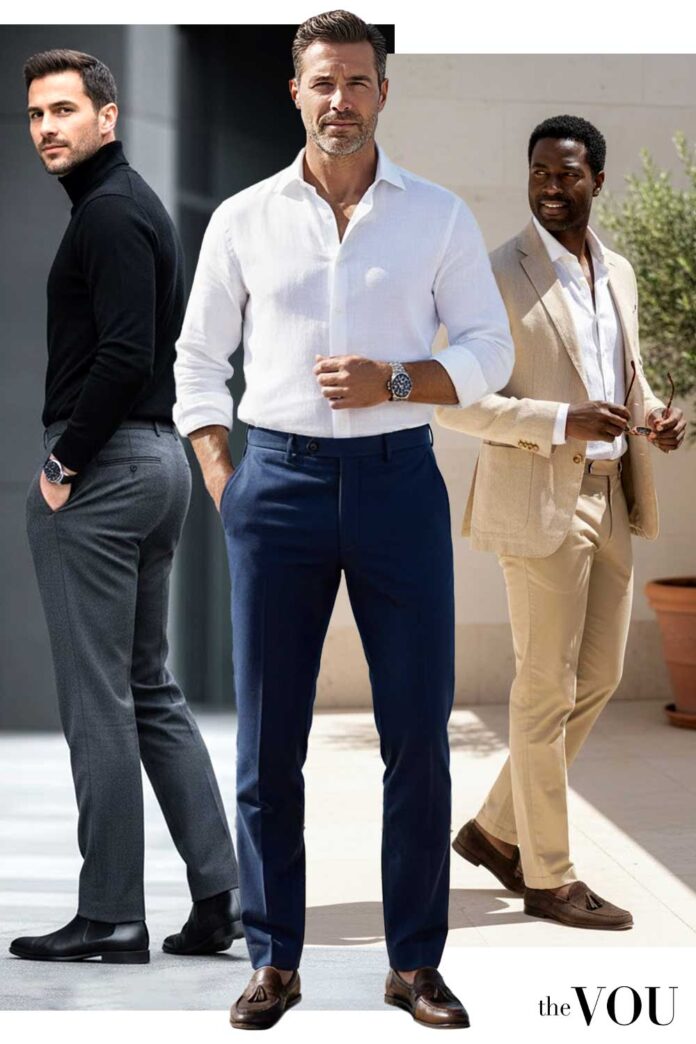
Great breakdown of classic color pairings — it’s often overlooked how much balance and confidence the right combinations can bring to a manBlog comment creation’s overall look. I’ve found that mastering just a few timeless pairings, like navy and camel or charcoal and white, can make everyday dressing so much easier while still looking refined. Would love to see a follow-up post on how to adapt these combos for different skin tones or seasonal palettes.